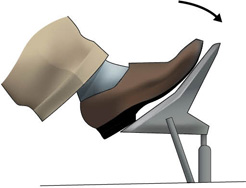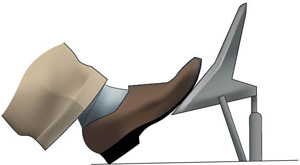Basic concepts
The purpose of this briefing is to consider the effects of the environment on the ground handling of the aeroplane.
These environmental factors include:
Taxiing is usually introduced during the first lesson, Effects of controls, but the considerations are usually spread over the lessons leading up to first solo. It is your responsibility to ensure that the student is aware of these considerations before recommending them for first solo. If a student has limited experience or exposure to operating 'machines', a separate taxi lesson may be appropriate.
Taxiing means: manoeuvring the aeroplane on the ground under its own power. This requires concentration and common sense. Your student needs to understand that an aeroplane is less manoeuvrable than a car, wider because of the wingspan, and you cannot reverse an aeroplane.
Correctly use the aeroplane’s controls to manoeuvre the aircraft on the ground at a speed appropriate for the prevailing conditions and situation, following a selected path and stopping at a nominated point.
Aeroplane speed is controlled with the hand-operated throttle. Because of inertia, more power will initially be required to get the aeroplane moving. As soon as the desired speed is reached, reduce power as appropriate.
Maintaining taxi speed will be affected by the surface, slope, wind, and power used. Some organisations recommend a minimum power setting while taxiing to minimise spark plug fouling (refer CFI).
To stop, ensure nose wheel is straight, close the throttle fully then apply both main wheel brakes, usually achieved by depressing the tops of both rudder pedals (see Figure 1). Slope, surface (wet or dry), and wind, all affect the ability to stop. How to apply and release the park brake should also be taught.

Figure 1 Braking
Increase power by moving the lever or plunger forward and decrease power by moving it rearwards.
Direction is controlled by nosewheel steering, and is done by pushing the appropriate rudder pedal (see Figure 2). This works in the natural sense – push the left rudder pedal and the nose turns to the left, and vice versa. In some aeroplane types, the rudder pedals may be augmented by differential braking to tighten the radius of turn if required.

Figure 2 Directional control
Wind affects directional control, and crosswinds will cause the aeroplane to weathercock into wind as a result of pressure on the vertical tail fin.
Most problems experienced by the student in maintaining directional control are a result of looking just ahead of the aeroplane, rather than at a point in the distance.
The aeroplane’s controls should be held in the appropriate position in relation to wind direction, as stated in the Flight Manual.
The use of full aft elevator in modern nosewheel training aeroplanes is not required while taxiing, but the elevator should be held either in the neutral position or slightly aft to keep the weight off the nosewheel and protect the nosegear. However, this may not be appropriate with high-tail aeroplanes (refer CFI).
Introduce the student to the right-of-way rules, as they apply while taxiing.
Show the student the aerodrome chart from AIP New Zealand Vol 4, pointing out the major features of the aerodrome and where to look for them once they are in the aeroplane.
Show the student the location of the windsocks and how to interpret them.
Explain to the student that it is important to communicate with other users of the aerodrome. In order to do this, you will be using radio calls to either the traffic, or the control tower (as appropriate). You will be giving your position, your intentions, and requesting any clearances you may need.
The student should listen to the calls you make and the responses you get. Remember to speak slowly and clearly.
Discuss your training aircraft’s particular nose wheel characteristics, eg, castoring, etc.
Avoid using power against brake.
The pilot’s seating position should be adjusted to make sure they can achieve full rudder deflection, and the seat locking should be checked for security. Make sure the student can reach all of the controls and seat height is adjusted so the student can see over the instrument panel. Introduce the appropriate positions for hands and feet while using the controls.
An appropriate period of engine warming should be observed before taxiing (see the Flight Manual).
Brakes should be checked for normal operation soon after the aeroplane begins to move. Close the throttle, depress the brake pedals with the balls of the feet, then slip the feet back down to the bottom of the rudder pedals.
The correct taxi speed is a fast walking pace, about 5 to 10 km/hr.
The use of carburettor heat on the ground should only be used during the run-up procedure and pre-take-off checks and be on a clear surface, as air from this source is unfiltered.
In winds of more than 5 knots, the aeroplane should always be stopped facing into wind to assist engine cooling.
Taxi on the centreline, but be aware of your own and other aeroplane’s wingtips and tailplanes, as well as propeller slipstreams. Be cautious of aeroplanes that may be producing jet blast, and avoid taxiing behind them.
Light aeroplanes may need to taxi right of the centreline to allow opposing direction aeroplanes to pass – aircraft should pass port to port (left to left).
While taxiing, the aeroplane’s flight instruments (turn coordination, direction indication, compass, and artificial horizon) should be checked for serviceability.
To prevent propeller damage, avoid taxiing over rough surfaces and limit the use of power when over loose gravel. Keep the aeroplane moving - twice as much power may be required to get going again if the aeroplane stops. If the surface looks doubtful, or excessive power (>2000 RPM) is required; stop, shut down, and get assistance. Do not try to ‘power out’ of soft ground.
Adhering to the right-of-way rules, being familiar with and carrying aerodrome charts, and windsock indications, will help orientate the student.
Vision will be affected by the cleanliness of the windscreen and side windows, and the cabin pillars. Demonstrate the effect of the blind spots that are created by the cabin structure, and wingtip clearance judgement. Show the student how to move the upper body to see around pillars and to mitigate blind spots.
Make sure all flights carry AIP New Zealand Vol 4 and appropriate charts to aid the student’s information processing.
The exercise consists of teaching the hand and feet positions and the methods of operating the controls.
Start the aeroplane, apply power to overcome inertia and get the aeroplane moving, test the brakes, maintain an appropriate taxi speed, turn and stop the aeroplane at a designated spot. The student should now practise all these manoeuvres.
Operation of the park brake should be demonstrated and, as appropriate, the effects of slope, surface, wind, and relative positioning to larger aeroplane’s slipstreams should also be pointed out.
Introduce aerodrome signs and markings.
Taxiing whiteboard layout [PDF 489 KB]
Revised 2023